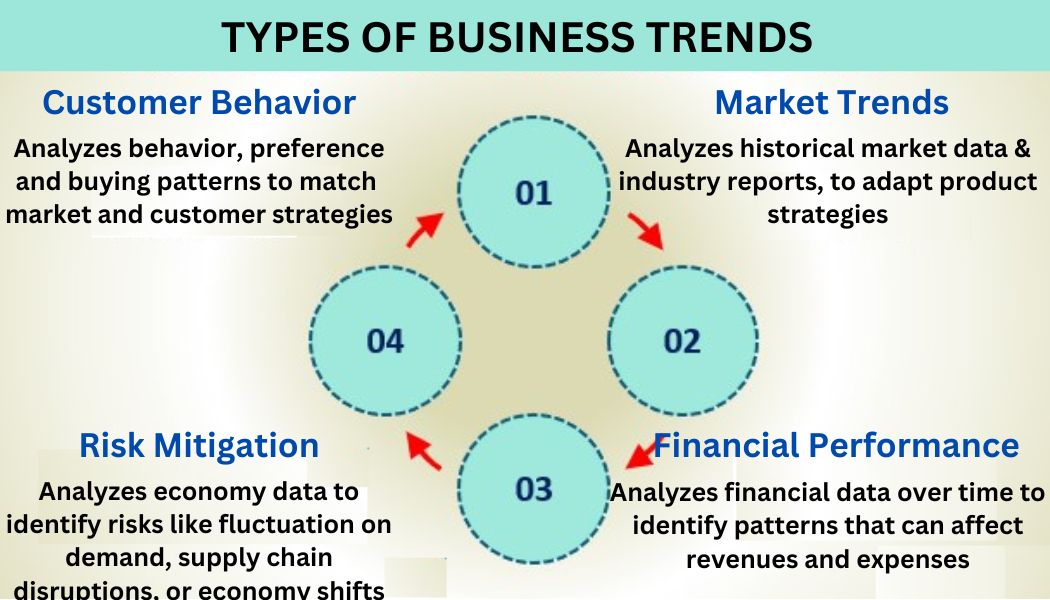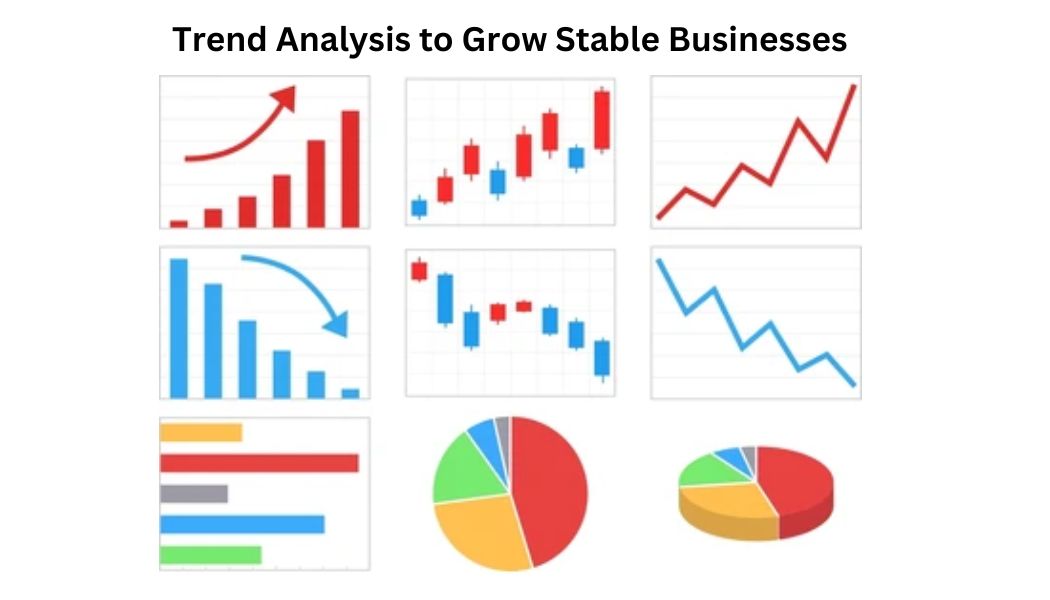Trend analysis is a technique used to predict future events or trends based on analysis of historical data. Most articles on this topic focus on spot patterns in investments or stock markets, but few address this technique’s use to promote sustainable business growth. In this article, I will explore how trend analysis for business can help you spot opportunities and risks in the core areas of your business, the benefits you will obtain, and guidelines to implement it.
Understanding Trend Analysis for Business
At its core, trend analysis involves examining historical data to identify patterns, anomalies, and trends in a specific area. By mining this data, you gain valuable insights into what is happening now and what is likely to happen in the future. In a normal business setting there are four types of trends that you would like to predict and the data set to analyze varies depending on the area you want to predict.

What Opportunities can you spot through Trend Analysis?
There are three main areas of opportunities that trend analysis for business offer:
Product and Service Innovation: Trend analysis can reveal gaps in the market where new products or services are needed. By identifying these opportunities, you can innovate and meet unmet customer needs.
Market Expansion: Analyzing trends in different geographic regions can highlight potential markets for expansion. You can leverage market insights to expand your reach strategically.
Customer Engagement: Understanding customer behavior trends can help you tailor your marketing efforts, ensuring you’re reaching your target audience effectively.
What Risks can you mitigate through Trend Analysis
There are three areas that pose the main risks for your business growth:
Supply Chain Management: Analyzing supply chain trends helps you identify vulnerabilities and diversify your supply sources to mitigate the risk of disruptions.
Financial Planning: Monitoring financial trends allows you to anticipate and prepare for economic downturns or market fluctuations, ensuring your business remains resilient.
Competitive Intelligence: By tracking your competitors’ strategies and performance trends, you can anticipate competitive challenges and adapt your approach.
Guidelines to implement Trend Analysis for Business
Data Collection: Start by collecting relevant data from internal and external sources. This may include sales records, customer feedback, industry reports, mobile applications, and economic data.
Data Analysis: Utilize data analysis tools and techniques to identify patterns and trends. Data visualization tools can be especially helpful in making complex trends more accessible.
Actionable Insights: Translate your findings into actionable insights. Develop strategies and action plans based on your analysis to capitalize on opportunities and mitigate risks.
Continuous Monitoring: Trend analysis is not a one-time exercise. Continuously monitor data and adjust your strategies as new trends emerge or existing ones evolve.
Promoting USA and Trend Analysis
Trend analysis is a powerful compass guiding your business through the dynamic landscape of opportunities and risks. By systematically examining historical data and deriving actionable insights, you can adapt, innovate, and thrive in an ever-changing market. Whether you are a startup looking for growth opportunities or an established business safeguarding against risks, Promoting USA can assist you in structuring and implementing trend analysis for business. If you want to learn more, give us your information to schedule a meeting.
I will continue to post information related to trade channel management, general economy and market trends. If you are interested in this article or want to learn more about Promoting USA, please subscribe to stay updated on future articles.
Subscribe to Promoting USA blog

